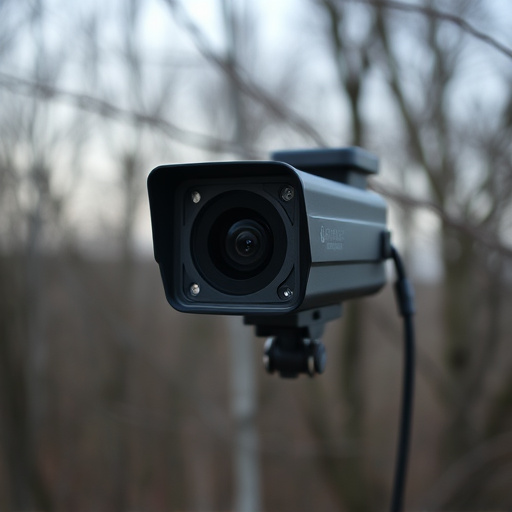Hidden camera networks have become essential tools for home security, offering remote access to live video feeds from anywhere at any time. These systems interconnect multiple hidden cameras via radio frequency signals or IP networks, providing immediate alerts upon detecting activity. Setting up a wireless network requires selecting the right hardware, including Network Video Recorders (NVRs) for video storage and management. It's crucial to choose a high-speed ISP, use strong passwords, and regularly update device firmware for optimal security. Careful camera placement and configuration ensure comprehensive coverage, with user-friendly apps allowing customization of settings for enhanced home monitoring.
“Enhance your home security with a wireless hidden camera network – a powerful tool for continuous monitoring. This comprehensive guide navigates setting up an effective system, from understanding hidden camera networks’ benefits for home protection to selecting top-tier hardware like cameras and NVRs (Network Video Recorders). Learn how to configure your wireless network securely and install your cameras strategically. By following these steps, you’ll harness the power of hidden cameras for comprehensive home monitoring.”
- Understanding Hidden Camera Networks for Home Security
- Choosing the Right Hardware: Cameras and NVR (Network Video Recorder)
- Setting Up Your Wireless Network and Security Measures
- Installing and Configuring Your Hidden Camera System
Understanding Hidden Camera Networks for Home Security
Hidden camera networks have emerged as a powerful tool for home security, offering homeowners peace of mind and advanced monitoring capabilities. These systems, often referred to as hidden cameras for home monitoring, provide remote access to live video feeds, allowing you to keep an eye on your property from anywhere at any time. By connecting multiple hidden cameras together, you can create a comprehensive network that covers various entry points, rooms, and areas within your home or business premise.
Understanding how this home security network functions is key to harnessing its full potential. Each hidden camera is typically equipped with a microcontroller, sensor, and storage unit, enabling it to capture high-resolution footage and transmit data wirelessly. When set up correctly, these cameras can communicate with each other via radio frequency signals or IP networks, creating a seamless surveillance system. This interconnectedness ensures that if one camera detects activity, the entire network can alert you simultaneously, providing an efficient response for enhanced home monitoring.
Choosing the Right Hardware: Cameras and NVR (Network Video Recorder)
When setting up a wireless hidden camera network, selecting the appropriate hardware is paramount for effective home monitoring. The cornerstone of your system is the cameras and Network Video Recorder (NVR). Hidden cameras come in various types, from compact and discreet models to more robust options with advanced features like motion detection and night vision. Choose cameras that align with your monitoring needs; indoor or outdoor use, resolution requirements, and field of view are all critical factors.
The NVR is the brain of the network, managing video storage and transmission. It should support the number of cameras you plan to connect while offering features like high-definition recording, remote access, and cloud integration for easy viewing and data storage. Opting for a quality NVR ensures smooth operation and reliable security for your home monitoring system.
Setting Up Your Wireless Network and Security Measures
Setting up a wireless hidden camera network is an essential step in ensuring effective home monitoring. The first order of business is establishing a robust and secure wireless network. Begin by choosing a reliable internet service provider (ISP) that offers high-speed, stable connectivity. A strong Wi-Fi signal is crucial for seamless transmission of video data from your hidden cameras to your central control unit or mobile device.
Once you have a solid internet connection, it’s time to secure your wireless network. Use strong, unique passwords for your router and each camera’s access point. Enable encryption protocols like WPA2 or WPA3 to protect your network from unauthorized access. Regularly update firmware on all devices to patch security vulnerabilities, ensuring your hidden cameras for home monitoring remain a robust defense against potential intruders.
Installing and Configuring Your Hidden Camera System
Installing and configuring your hidden camera system is a crucial step in setting up an effective home monitoring solution. Start by carefully planning the placement of each camera to ensure comprehensive coverage of the areas you want to monitor. Hidden cameras for home monitoring can be discreetly installed in various locations, from ceiling corners to door jambs or even behind decorative objects. Ensure each camera has a clear view and access to power sources, following the manufacturer’s guidelines for optimal positioning.
Once the physical installation is complete, configuring your hidden camera network involves connecting each device to your home network and setting up user accounts. Most modern systems offer user-friendly apps that allow you to control and monitor cameras remotely. Configure settings like resolution, video quality, motion detection sensitivity, and scheduling options according to your needs. By customizing these settings, you can optimize the performance of your hidden camera system for efficient home monitoring.
Setting up a wireless hidden camera network is a powerful way to enhance home security, offering peace of mind and comprehensive monitoring. By understanding the basics, selecting quality hardware, securing your wireless network, and properly installing and configuring your system, you can create an effective surveillance solution tailored to your needs. Implement these steps, and you’ll be well on your way to harnessing the benefits of hidden cameras for home monitoring.
